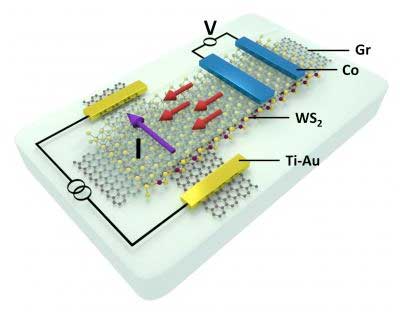Nanowerk September 17, 2019
Using gold electrodes, researchers in the Netherlands were able to send a pure charge current through graphene and generate a spin current, referred to as the Rashba-Edelstein effect. This happens due to the interaction with the heavy atoms of the TMD monolayer (in this case, tungsten disulfide). The charge current induces a spin current in the graphene, which they could measure with spin-selective ferromagnetic cobalt electrodes. The charge-to-spin conversion makes it possible to build all-electrical spin circuits with graphene. They showed that the efficiency of the generation of the spin accumulation can be tuned by the application of an electric field. This means the spin current can be switched on and off. Their study shows that the Spin-Hall effect does the same, but that these spins are oriented differently…read more. Open Access TECHNICAL ARTICLE

Schematics of a nanodevice, used for observation of charge-to-spin conversion in a van der Waals heterostructure of graphene and WS2. (Image: Talieh Ghiasi et al.)